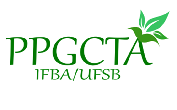Banca de QUALIFICAÇÃO: ANA LUISA SANTOS DE CARVALHO
Uma banca de QUALIFICAÇÃO de MESTRADO foi cadastrada pelo programa.DISCENTE : ANA LUISA SANTOS DE CARVALHO
DATA : 29/08/2019
HORA: 09:30
LOCAL: Campus Sosígenes Costa - Sala Mata Medonha
TÍTULO:
Dynamic modeling of solid waste production and estimation of methane gas production for a future landfill site in Porto Seguro - BA
PALAVRAS-CHAVES:
Gravimetric composition, dynamic modeling, MQ-4 sensor.
PÁGINAS: 70
GRANDE ÁREA: Outra
ÁREA: Ciências Ambientais
RESUMO:
The growing increase and diversification in the production of municipal solid waste, coupled with changes in consumption habits, has made their final disposal one of the main challenges to be faced in the world. In most municipalities in Brazil, this problem is aggravated by inadequate dumping in the open without proper treatment. This reality is no different for Porto Seguro - BA, which has an open dump causing many environmental problems. In this sense, the objective of this work was to perform the dynamic modeling of solid waste production and estimation of methane gas production for a future landfill in Porto Seguro - BA. Three sectors represented by the local and floating population were chosen to perform the characterization and the adopted methodology was the quartering proposed by NBR 10.007 of ABNT. Characterization data were modeled using Stella software to estimate waste production over a 20-year period. At the same time, an equipment with sensors is being developed and calibrated to estimate methane gas production in the municipal dump. Preliminary results indicate the predominant presence of organic matter for the three sectors, with the highest percentage for the neighborhoods of Centro and Arraial D'Ajuda district. While hotels on the waterfront have found a significant amount of materials such as plastic, PET, paper and cardboard. The daily production of waste in the municipality in low season is 150 tons and in high season is 212.5 tons, with average per capita production of approximately 1.5 kg / day. While the modeling of solid waste production indicated the cumulative total of 1,518,183.46 tons at the end of the 20-year period, of which 622,455.22 tons correspond to the production of organic waste. Regarding the development of the equipment, the calibration of the sensors of soil moisture (YL-69), soil temperature (NTC thermistor) and air pressure, temperature and humidity (BME280) presented satisfactory results for use in the field. Given the above, it is concluded from the preliminary results that the waste from the local population is predominantly organic and can be destined for energy generation and / or for fertilizer production through the composting process. Waste produced by tourism can be reused through recycling, helping to reduce urban solid waste that goes to the dump. In terms of equipment development, it has a technical and economic advantage and real-time monitoring will contribute to planning and assist decision-making.
MEMBROS DA BANCA:
Interno - 962.287.925-04 - ALLISON GONÇALVES SILVA - IFBA
Interno - 3072612 - ELFANY REIS DO NASCIMENTO LOPES
Presidente - 548.407.245-04 - MARCUS LUCIANO SOUZA DE FERREIRA BANDEIRA - IFBA



